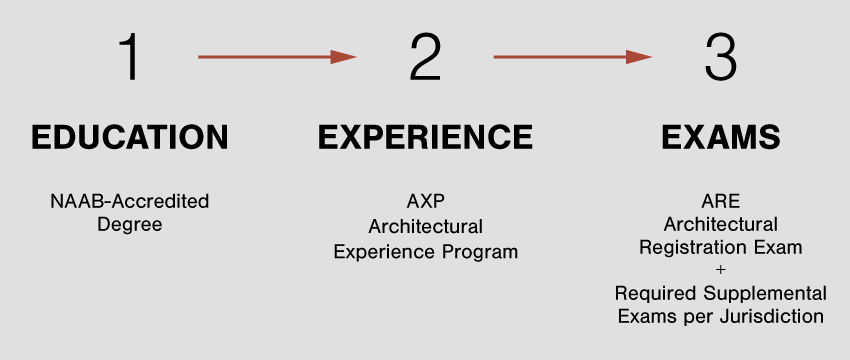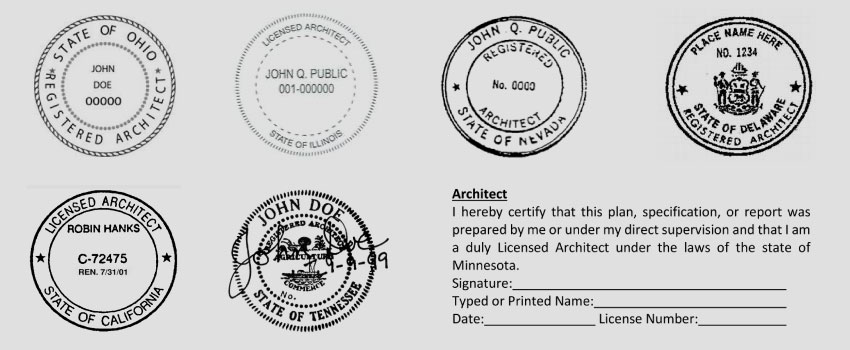Becoming a licensed architect in the United States is a journey marked by a commitment to art, science, design, and to the welfare of the public. Architects are responsible for shaping the built environment, and their work impacts the lives of countless individuals. Achieving licensure is a crucial step for those aspiring to practice architecture professionally.
- A Brief History of Architectural Licensure in the United States
- State Regulation of Architectural Practice
- Educational and Experience Requirements
- Stamps and Seals
- What Happens After You Are Licensed
- Renewal of License
- Continuing Education
- Reciprocity – Practice in Other States
- Specialization
- Join Professional Organizations
- Additional Credentials
- Do You Really Need to Get Licensed?
- Conclusion
- References
In this article, we will explore the historical context of architectural licensure in the U.S., the state-based regulatory system, required education, the crucial experience component, the importance of stamps and seals, and what happens after you become a licensed architect.
A Brief History of Architectural Licensure in the United States
Architectural licensure in the United States has a rich history dating back to the late 19th century when many professional organizations were formed to protect the public from unscrupulous individuals. The American Institute of Architects (AIA), founded in 1857, played a pivotal role in advocating for the establishment of licensing laws to ensure public safety and uphold the standards of the profession. In addition, the (now defunct) Western Association of Architects advocated for national licensing laws. By the early 20th century, a growing number of states began to implement regulations for architects.
The first state to introduce architectural licensure was Illinois in 1897, followed by California in 1901 and New Jersey in 1902. The movement gained momentum, leading to the formation of the National Council of Architectural Registration Boards (NCARB) in 1919, which aimed to standardize licensure requirements and facilitate reciprocity across states. As of early 2024, all 50 U.S. states, the District of Columbia, Puerto Rico, the U.S. Virgin Islands, Guam, and the Northern Mariana Islands have active licensing boards under NCARB oversight.
State Regulation of Architectural Practice
In the United States, architectural licensure is regulated at the state or territory level. Each state has its own architectural licensing board responsible for defining the specific requirements and administering the licensing process. This decentralized system allows states to adapt their regulations to local needs while maintaining a set of core standards established by NCARB.
One of the key objectives of NCARB is to facilitate reciprocity, enabling architects to work across state lines without undergoing a lengthy relicensing process. The organization developed the NCARB Certificate, which is recognized by many states as evidence of a candidate's qualifications and competency. Reciprocity requirements vary by state, but architects holding the NCARB Certificate have an advantage in obtaining licensure in other jurisdictions with reduced (or eliminated) requirements.
As global trade has developed and many firms operate internationally, architects holding an NCARB Certificate may also get licensure in other countries including Canada, Mexico, the United Kingdom, Australia, and New Zealand. Likewise, architects in those countries can follow NCARB guidance to get licensed in the United States.
Educational and Experience Requirements
The journey to becoming a licensed architect begins with a solid educational foundation. To qualify for licensure, one typically needs to complete the following steps:

- Education: Obtain a professional degree in from an architecture program accredited by the National Architectural Accrediting Board (NAAB). The most common architecture degrees are the Bachelor of Architecture (B.Arch) and the Master of Architecture (M.Arch).
- Experience: A candidate’s experience is tracked through the Architectural Experience Program(AXP), which is managed by NCARB. AXP is a comprehensive program that requires aspiring architects to track a diverse range of experiences in various aspects of architectural practice, including project planning, design, project management, and construction administration. AXP is designed to help candidates develop competency in the skills required for successful architectural practice. AXP starts while in school and extends into an internship and through the early years of a candidate’s career.
- Exam: Pass the Architect Registration Examination (ARE), a national examination administered by NCARB. The ARE currently consists of six divisions, each assessing different aspects of architectural practice. Given its complexity, many candidates spread out the exam sections over months or even years.
- Supplementary Exams: Some states require additional exams after you complete the ARE. For example, California and Florida have additional testing requirements so candidates can demonstrate competencies that relate to the specific geographic concerns of their states.
Once you meet the above requirements and any others determined by your state, you may apply for a license with the state licensing board. Once licensed, you may call yourself an architect.
Alternative Licensing Paths
As of 2024, only seventeen states or territories allow for licensure without a NAAB-accredited degree. Usually, you need to gain additional experience beyond the AXP requirements, but each jurisdiction has their own requirements. You can find those requirements in NCARB’s Licensing Requirements Tool.
While NCARB encourages each jurisdiction to have alternate pathways that don’t require an accredited degree, there isn’t a national policy. However, they are looking into opportunities to formalize alternatives.
Stamps and Seals
Architects play a vital role in ensuring the safety and integrity of the built environment. Stamps and seals are the physical representation of an architect's professional responsibility. They are used to signify that architectural drawings and documents have been prepared or reviewed by a licensed architect and that they comply with relevant building codes and regulations.

Building departments require an architect to affix their seal to all architectural drawings, specifications, and other project-related documents that are submitted for certain building permits. The seal serves as a mark of accountability and signifies that the architect takes responsibility for the work's compliance with applicable laws and regulations.
What Happens After You Are Licensed
Congratulations! Achieving licensure is a significant milestone in an architect's career, but it's just the beginning of a lifelong journey of professional development. Of course, you can start sealing documents for your firm or you may decide to open your own firm. There are a few other things to consider.
Renewal of License
Licenses aren't perpetual. Architects need to renew them periodically, typically every 1-3 years, depending on the state’s architect registration board. Part of renewal requires documentation of continuing education to make sure you are aware of the latest technologies in the industry.
Continuing Education
Architects are required to engage in continuing education to stay up to date with evolving building codes, construction techniques, and design trends. Each state has its own requirements, but architects often need to complete a set number of continuing education units (CEUs) every year or biennially.
Reciprocity – Practice in Other States
Reciprocity was discussed earlier, but it is worth noting that a license is only applicable to one jurisdiction. You need a separate license for each state where you intend to work on projects that require stamped drawings. NCARB makes it easier to get licensed in other states by providing documentation that you completed a degree, AXP hours, and passed your exam. This is accomplished through the NCARB Certificate.
Specialization
Licensure opens various career opportunities, including the chance to work on larger and more complex projects. Architects may also pursue specialties like building information modeling, sustainable design, historic preservation, or healthcare architecture. Every project type requires specialty knowledge that is different from other types – designing a home is much different than designing an airport or hospital.
Join Professional Organizations
Getting an architecture license does not let you put AIA after your name on your business cards. The American Institute of Architects (AIA) is the main professional organization that connects and advocates for architects in the United States. You may join the AIA or any other professional organization to help expand your network and improve the profession.
Additional Credentials
Many professionals decide that they want to pursue additional credentials after they get licensed. Afterall, you are in the test-prep and test-taking mode so it makes sense to keep the momentum going. There are many options, but two common credentials are LEED AP for sustainable design and WELL AP for health-focused design. There are also specialty certifications like the American College of Healthcare Architects.
Do You Really Need to Get Licensed?
You don’t have to be a licensed architect to work in an architecture firm. There is a significant number of people who went to architecture school, but never completed the ARE. This is not a problem if they are working under a licensed architect who eventually reviews and stamps the construction documents.
While there are some people who can advance to more senior positions without a license, many firms require a license to move up in the firm.
Conclusion
Becoming a licensed architect in the United States is a journey that demands dedication, education, experience, and a commitment to upholding the highest standards of the profession. It is a process deeply rooted in history, with each state maintaining its own set of regulations, and overseen by NCARB at the national level to promote standardization and reciprocity. Upon achieving licensure, architects bear the seal of responsibility, signifying their commitment to ethics, public safety, and their role in shaping the built environment.
Aspiring architects should embrace this journey with enthusiasm, recognizing that licensure not only brings professional opportunities but also a profound sense of fulfillment in contributing to the creation of functional, aesthetically pleasing, and safe structures that enhance the lives of everyone throughout the United States. Architects don’t just design buildings; they shape skylines, influence communities, and leave lasting legacies. If you're on this path or contemplating it, know that you are choosing an occupation with profound societal impact.
References
Beginning of Licensure, NCARB, https://centennial.ncarb.org/beginning-of-licensure/
International Practice, NCARB, https://www.ncarb.org/ncarb-certificate/international-practice


